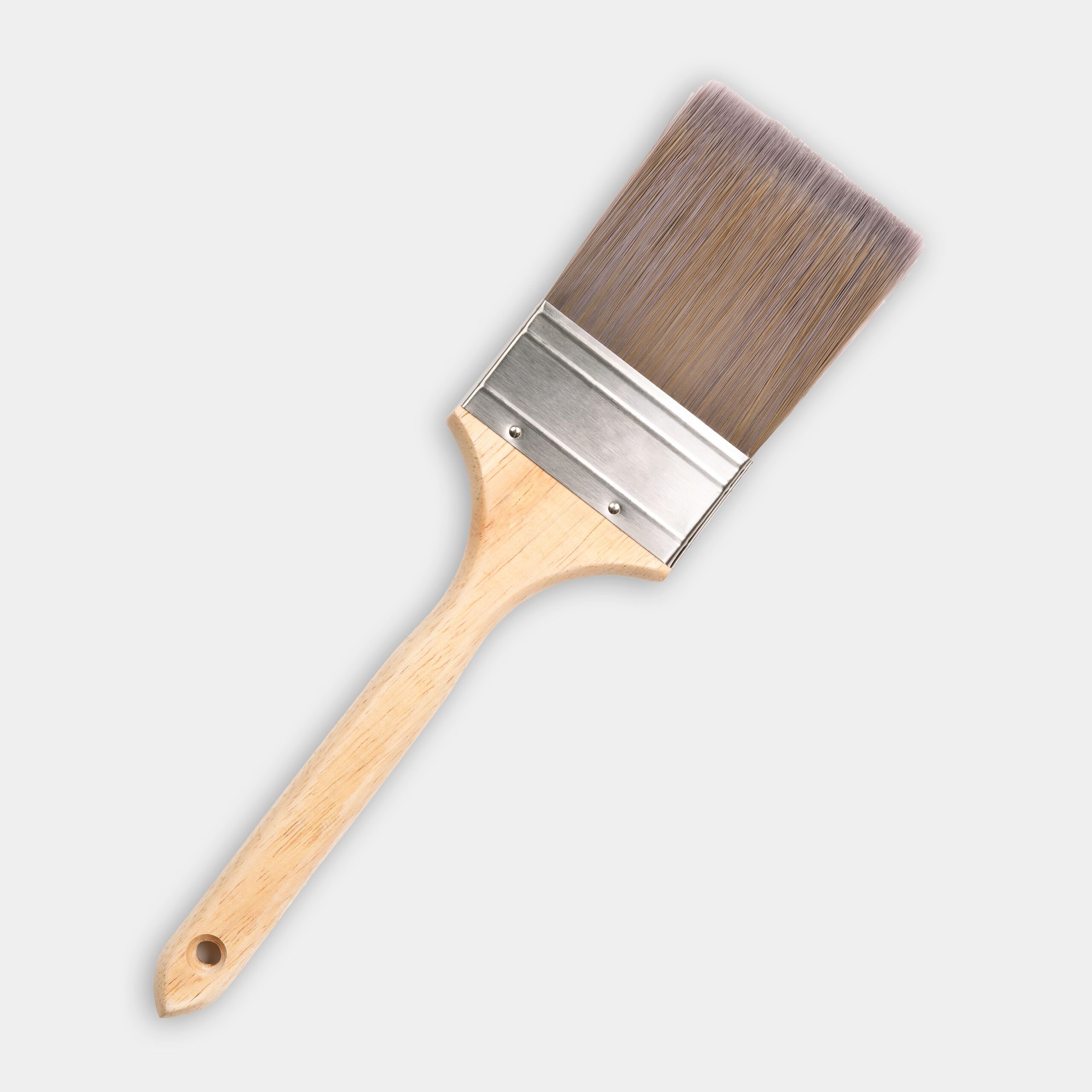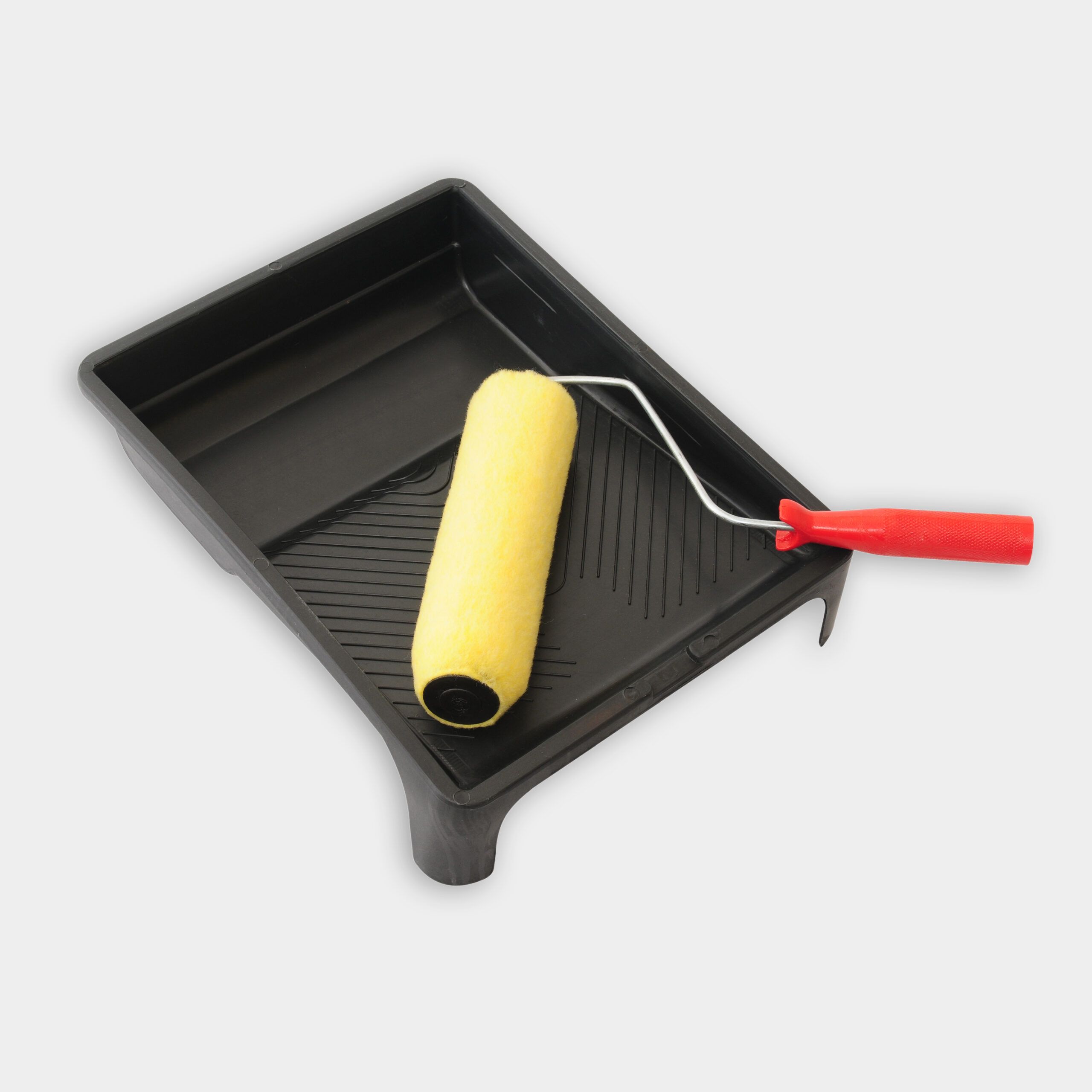Project details
Skill
Cost
Estimated Time
A finish protects your deck against water and UV rays, which can otherwise rot, fade, or warp it. You can choose from various finish options, each offering different looks and levels of protection.
Our guide walks you through the types of deck finishes available, their benefits, and how to choose the best one for your outdoor space. In the video above, This Old House general contractor Tom Silva and host Kevin O’Connor delve into the nuances of selecting the perfect wood deck finish.
Tools Needed to Apply a Deck Finish
Gather the following tools to apply a deck finish:
What Are the Three Main Types of Deck Finishes?
There are three main categories of deck finishes to choose from: clear waterproofing finishes, semi-transparent stains, and solid-body stains.
Clear Waterproofing Finishes
Clear waterproofing finishes are great for those who want to protect their deck while maintaining the wood’s natural beauty. These finishes offer the following benefits:
- Preserve the wood’s natural grain and color
- Protect against moisture damage
- Allow for easy reapplication and maintenance
- Ideal for high-quality wood species such as mahogany or cedar
Clear finishes are typically applied with a brush or sprayer to achieve even coverage. Despite their effective moisture protection, they offer minimal protection against UV rays, which can cause wood to gray over time. Frequent reapplication is needed to maintain the wood’s appearance and protection, making it less ideal for those seeking a low-maintenance option.
Semi-Transparent Stains
Semi-transparent stains offer a balance of protection and style. They add a hint of color while allowing some of the wood grain to show through. Here are some advantages of semi-transparent stains:
- Provide better UV protection than clear finishes
- Add a subtle tint to enhance the wood’s appearance
- Offer moderate protection against moisture and wear
- Available in a variety of colors to complement your home’s exterior
Semi-transparent stains penetrate into the wood, providing long-lasting protection. While they typically last longer than clear finishes, they may require touch-ups and maintenance to keep the deck looking fresh.
Solid-Body Stains
Solid-body stains are the best choice for maximum protection and color saturation. These finishes offer the following benefits:
- Provide excellent UV protection
- Conceal imperfections in the wood
- Available in a wide range of colors
- Offer the longest-lasting protection against wear and tear
Solid-body stains are akin to paint and provide a solid color finish that hides the wood grain entirely. This type of stain is particularly useful for older decks or those with significant imperfections that need to be concealed. While solid-body stains offer the most durable protection, they do hide the natural wood grain.
Factors to Consider When Choosing a Deck Finish
Several factors come into play when selecting the best finish for your deck. Consider the following to make an informed decision.
Desired Appearance
Think through the overall look you want to achieve for your outdoor space. A clear finish or light semi-transparent stain may be the best choice if you prefer a natural wood appearance. For a more dramatic change or to coordinate with your home’s exterior, a solid-body stain in a complementary color could be the way to go.
Environmental Impact
Look for finishes with low volatile organic compounds (VOCs) to minimize the release of harmful chemicals into the environment. Water-based finishes are generally lower in VOCs than oil-based options, making them a safer choice for your family and the environment.
Maintenance Requirements
Different finishes require varying levels of maintenance. Clear finishes typically need to be reapplied more frequently, while solid-body stains offer the longest-lasting protection. When choosing a finish, consider how much time and effort you’re willing to invest in maintaining your deck.
Sun Exposure
The amount of direct sunlight your deck receives determines the best finish. Decks with high sun exposure may benefit from a solid-body stain, which offers the best UV protection. A semi-transparent stain might provide adequate protection for partially shaded decks while still allowing some of the wood grain to show through.
Wood Type and Condition
The type of wood used for your deck can influence your choice of finish. Some woods, such as cedar and redwood, have natural oils that may affect how well a finish adheres. A clear or semi-transparent finish may be better for newer decks made of high-quality wood to showcase the natural beauty of the wood grain. Conversely, a solid-body stain may be more suitable for older or pressure-treated wood decks to cover imperfections and provide long-lasting protection.
Application Tips for Deck Finishes
Proper application is key to achieving the best results with your chosen deck finish. Follow these tips:
- Clean the deck thoroughly before applying any finish.
- Allow the wood to dry completely if it has been recently cleaned or exposed to rain.
- Sand rough spots or splinters to achieve an even application.
- Apply the finish in thin, even coats using a brush, roller, or sprayer.
- Work in small sections, following the wood grain.
- Allow adequate drying time between coats as recommended by the manufacturer.
In the video, Silva and O’Connor show how to apply different finishes, emphasizing the importance of proper technique. Achieving a smooth and even application is crucial, especially for solid-body stains that fully cover the wood grain. Follow the manufacturer’s guidelines and use high-quality tools to avoid lap marks and uneven coverage.
Maintenance and Reapplication
How often you have to reapply finish depends on the type used and the amount of wear and tear your deck experiences. Here are some general guidelines:
- Clear finishes: Reapply every 1–2 years
- Semi-transparent stains: Reapply every 2–3 years
- Solid-body stains: Reapply every 3–5 years
Regular cleaning and inspection can help you determine when it’s time to reapply the finish. Look for signs of wear, such as fading, peeling, or areas where water no longer beads up on the surface.
One way to extend the life of your deck finish is by using outdoor furniture and rugs that won’t scratch or damage the surface. Remove standing water, which can accelerate wear and tear, and address any drainage issues promptly.


